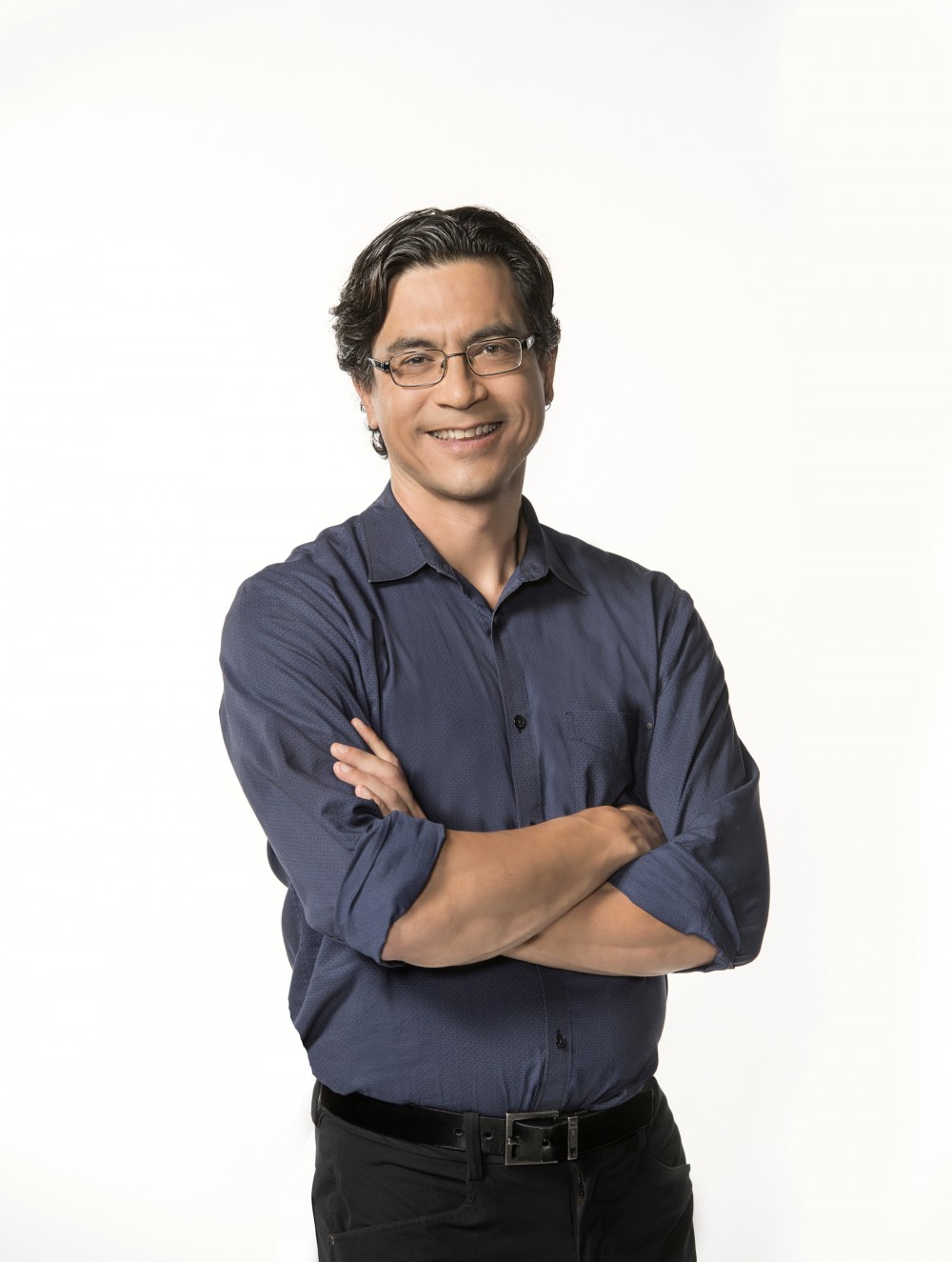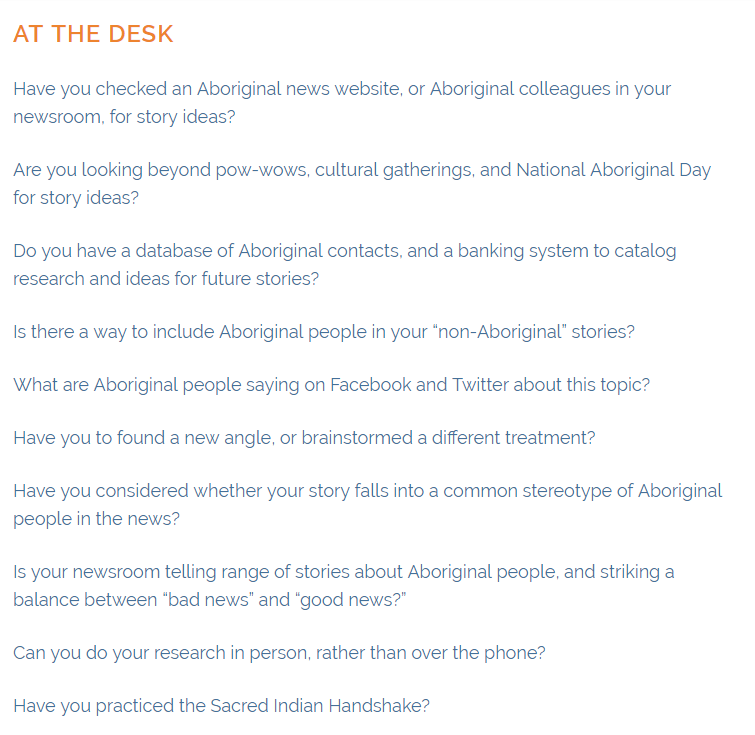About 10 years ago, senior staff at the Canadian Broadcasting Corporation (CBC) realized that their coverage of Indigenous communities was seriously lacking — both in quantity and quality. They reached out to Indigenous staff to brainstorm ways to address the problem.
These conversations inspired reporter Duncan McCue to create a resource for reporters, specifically non-Indigenous reporters, to cover First Nations.
“Non-Indigenous reporters felt like they were challenged when it came to covering First Nations, and that they needed some sort of guide that would help them and give them some tips,” said McCue. “Nothing like that existed in Canada, and frankly nothing like that existed [anywhere].”
From 2010 to 2011, McCue had some time away from his job at CBC News while on a John S. Knight Fellowship at Stanford University. He used the time to put together the type of guide reporters were asking for. He used existing research — although sparse — as well as his own experience as a reporter.
 The final product, Reporting in Indigenous Communities (RIIC), was published in 2011. It walks reporters through all steps of the reporting process, including “at the desk,” “in the field” and “on the air.”
The final product, Reporting in Indigenous Communities (RIIC), was published in 2011. It walks reporters through all steps of the reporting process, including “at the desk,” “in the field” and “on the air.”
“I wrote it in such a way that working journalists would be able to dip into it and get practical solutions to some of the very real challenges that we face in the field when we're reporting in Indigenous communities,” McCue said. “It wasn't meant to be academic; it was meant to offer practical solutions in language that reporters would understand and appreciate.”
We spoke to McCue about the guide, his process for creating it and advice he has for reporters.
IJNet: When you were doing preliminary research, what were the biggest challenges that were preventing non-Native reporters from covering these communities?
McCue: When you talk to reporters about the challenges they face, they have challenges building trust relationships with Indigenous communities. They don't get calls back, for example, or they don't get people responding on their deadlines. Understand that when I say Indigenous communities, I mean both urban and rural. But many reporters feel that they aren't able to develop a connection that will allow them to tell a story fully. There's some frustration in regards to that.
There's also the perennial issue of resources, particularly money, when it comes to reporting in Indigenous communities. A lot of Indigenous communities are off the beaten track, so it takes money to get there. Those are internal battles that we need to fight, in terms of funding a story properly so that it can be told.
You researched many different Indigenous communities, from Canada to Australia to Sweden. Is this guide made for a global audience?
Because so much of it was based on my personal experience, it was written with the Canadian example in mind. But I did consult writing and academic material from international sources. I was very pleased to hear within the first year of the launch that it was getting used around the world. The site’s applications go far beyond Canada because the Indigenous experience, while it's obviously very different around the world, [has] lots of commonalities as well.
In addition to dealing with state actors and the media, there are lots of [other] similarities between what the Sámi have experienced in Norway, to what the Australian Indigenous groups have experienced, to what Native Americans have experienced in the United States.
What's your advice for someone who wants to cover these topics but feels overwhelmed?

If you read through the entire guide as a reporter, obviously there are a lot of very specific tips, but if it boils down to one thing, it's act with respect. When I say that to people, they say, "That seems like very simplistic advice," and "Shouldn't we do that with all of our stories and all the subjects we interview?" Of course we should. But the reality is — having watched how a newsroom works — because of the time and deadline pressure that we're under and the vast amounts of material that we produce, many journalists are perceived by Indigenous communities as acting disrespectfully. Whether that means not taking the time to sit and talk with an elder, or being pushy about what time of day an interview should happen.
All the advice I provide in the guide goes back to understanding the [reporting process] in an Indigenous context, and then doing your best to adapt your journalistic approach in such a way that respects some of those cultural protocols. Rather than dig in our heels and say, "This is the way that we do things in a newsroom, these are the kind of ethics that we follow as journalists," we need to put on our thinking caps and say, "Can we find ways to build relationships with Indigenous communities that respect some of the cultural protocols and ethics of Indigenous communities in ways that don't upend the common practices in newsrooms?”
This was published in 2011. What have you seen change since then?
In Canada, in the past two years, there has been a significant change in terms of Indigenous coverage, both in terms of quantity and quality, and there are all kinds of different reasons for that. Slowly but surely, the mainstream media is getting the message that [they have] done an incredibly poor job of covering Indigenous communities in this country for the better part of a century. That has hurt our reputation [in the media] and is losing us audiences. There's been a recognition in Canada that that needs to change. We are starting to see a much more concerted effort by many mainstream media outlets to increase the coverage of Indigenous issues and include more Indigenous voices. There is [still] a lot that needs to change, and we're still not even close to equity when it comes to the quantity of coverage, but there have been some very positive changes in the last couple years.
This interview was edited for length and clarity.
Duncan McCue is an award-winning journalist based in Toronto. He hosts the CBC Radio One’s show “Cross Country Checkup” and is a features reporter for The National, CBC’s network news show. McCue also teaches journalism and was the author of a memoir, The Shoe Boy: A Trapline Memoir. McCue is Anishinaabe, a member of the Chippewas of Georgina Island First Nation in southern Ontario.
Main images courtesy of RIIC and Duncan McCue.

